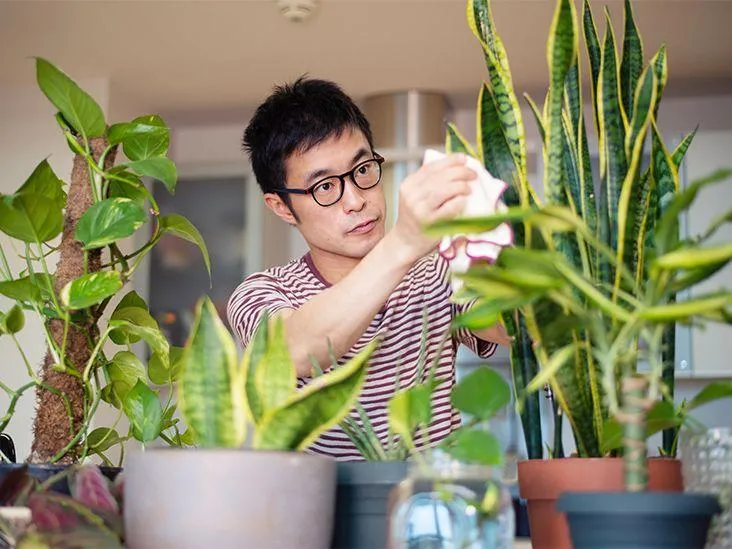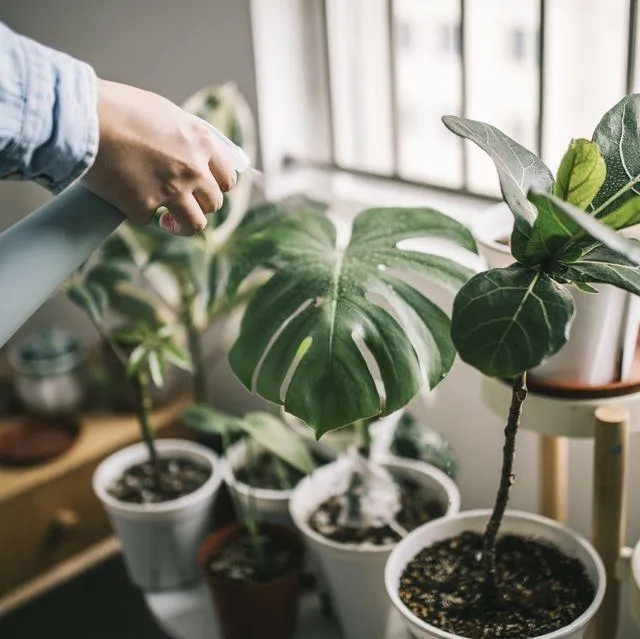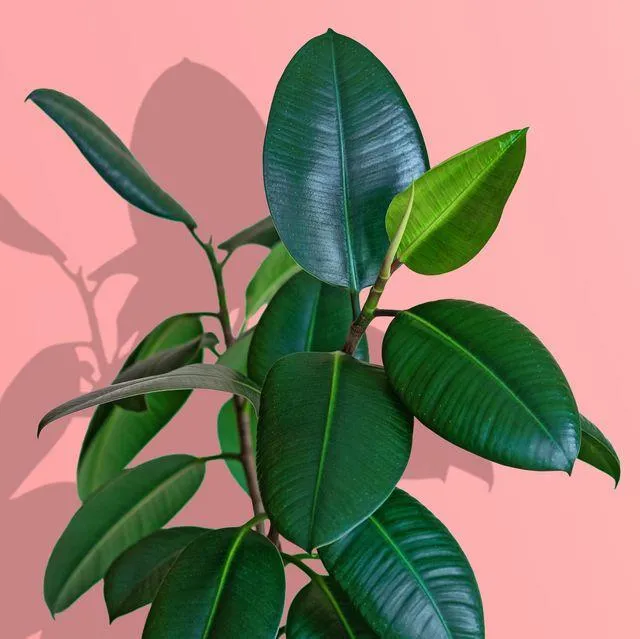A Guide to Low-Maintenance Indoor Plants
Are you looking for some lush greenery to brighten up your indoor space but don’t want the hassle of high-maintenance plants? Look no further than these easy-care indoor plants that even the blackest of thumbs can keep alive. From my experience living in small apartments over the years, these sturdy little plants are perfect for those with busy schedules or who aren’t naturally green-thumbed. Keep reading to learn about 15 low-fuss indoor plants perfect for any home, along with their common names.
Snake Plant (Sansevieria trifasciata)
- One of the toughest indoor plants you can get, snake plants are practically impossible to kill. They can go weeks without water and actually remove toxins like formaldehyde from the air. With their stiff, sword-like leaves in shades of green, they’re a conversation starter that doesn’t need much attention.
ZZ Plant (Zamioculcas zamiifolia)
- Looking for a plant that seems to thrive on neglect? The ZZ plant is for you. It can go months without water and tolerate very low light conditions. Its waxy green leaves with bright yellow variegation make it a real eye-catcher. Just be sure not to overwater – they prefer to dry out completely between waterings.
Peace Lily (Spathiphyllum)
- With its glossy green leaves and clustered white blooms, the peace lily is a staple office plant that’s hard to disregard. It removes indoor pollutants and its flowers only last a week or two but continue blooming for years. It will let you know when it’s thirsty by drooping its leaves dramatically until you water it, then perks right back up.
Chinese Evergreens (Aglaonema)
- For colorful low-light foliage houseplants, you can’t beat Chinese evergreens. With their textured leaves in shades like pink, white, and burgundy, they look great but aren’t picky about care. Just water when the soil is dry and they’ll be happy in any corner. They are toxic to pets though, so keep them out of reach.
Pothos (Epipremnum aureum)
- You’ve probably seen this trailing vine everywhere because it’s just about indestructible. With its heart-shaped green or variegated leaves, it’s a perfect hanging plant that thrives on neglect. Water whenever the soil is dry – about every few weeks – and it will grow happily. They even remove indoor pollutants like benzene and formaldehyde from the air.
Spider Plant (Chlorophytum comosum)
- Producing little spider-like pups in hanging clusters off of grassy lime green leaves, spider plants are true troopers. They’re forgiving of underwatering and do well in low light. You can divide the plantlets (called “pups”) to propagate it and spread the greenery around your home. Give it sun and let it dry between waterings for this one to thrive with ease.
Jade Plant (Crassula ovata)
- With their fleshy rounded or pointed leaves in shades of green and red, jade plants are iconic succulents that are almost impossible to kill through neglect. They store water in their leaves so barely need watering – about once a month. Just let the soil dry fully and give it east or west window light for beautiful low-maintenance color and texture.
Cast Iron Plant (Aspidistra elatior)
- Live up to its name by not watering for weeks at a time – this plant really can live through almost anything. Its thick, glossy leaves in shades of green will survive very low light and infrequent waterings with ease. Just water when the soil is dry and give it a few hours of light each day. Despite its tough nature, it’s still an attractive addition with long-lasting leaves.
Ponytail Palm (Beaucarnea recurvata)
- With a single palm-like trunk topped with a rosette of narrow leaves resembling a ponytail, this is one of the most unique and hardy indoor plants. It tolerates low light and barely needs water – just give it a drink every few weeks. Ponytail palms add an effortlessly exotic touch to any decor and stay looking lush with very low maintenance needs.
Bamboo Palm (Chamaedorea seifrizii)
- Having lived through earthquakes in California, this writer can attest that the bamboo palm is an extremely durable little plant. With its slender trunk and fan of glossy green leaves, it tolerates low light beautifully so long as the air is humid. Water every couple weeks when soil is dry. Give medium to low indirect light and you’ve got an easy-care tropical accent.
Rubber Plant (Ficus elastica)
- With their thick, glossy leaves in deep greens and variegated patterns, rubber plants are surprisingly resilient. They tolerate underwatering well and remove toxins from the air. Just be sure not to overwater and only water when the top few inches of soil are dry. Though tall, they are slow growing and make an impact with minimal care.
Agave (Agave americana)
- Succulent lovers will appreciate the architectural blue-gray leaves of Agave plants. They barely need water and prefer very bright light. Water just a few times in summer when soil is dry. With their rosette shape and spiky foliage, agave add sculptural style and are nearly impossible to kill – making them perfect for new plant parents.
Parlor Palm (Chamaedorea elegans)
- Similar to bamboo palm but more compact, the parlor palm features narrow fronds emerging from a central trunk. It does best in bright indirect light and slightly more frequent watering than other palms. But it tolerates dry conditions too when necessary. A warm, tropical favorite that says “vacation” without much hassle.
Devil’s Ivy (Epipremnum aureum ‘Marble Queen’)
- This type of pothos vine has streaked white and green leaves that are simply stunning. it grows quickly and climbs beautifully when given support. As heart-hardy as basic Pothos, it removes chemicals from the air. Just give it bright light and infrequent watering.
Hopefully this overview has covered the basics of 15 low-maintenance indoor plants and their common names to help you choose some durable, beginner-friendly greenery. While calm and collected plants like snake plants or succulents may be the easiest care, it’s perfectly reasonable to choose something a bit more high maintenance if that’s what you find visually appealing. The trick is balancing your preferences with your available time and energy.

At the same time, don’t forget that less is more when it comes to watering most houseplants. Let the soil dry out between waterings rather than keeping it continuously moist, which can lead to root rot. Plants like peace lilies may also help indicate when they need a drink by dropping their leaves dramatically. Use these signs as your guide instead of a strict schedule.
Another thing to consider – while most plants listed here do okay in medium to low light, a little extra brightness will help them grow healthier and look their best. So if possible, place plants in an east or west-facing window to receive some indirect sunlight each day. This usually ensures they get just enough light to thrive. With a little TLC in lighting and watering, your new leafy companions should bring you joy for many years to come with basically no effort! Let me know if you have any other questions.

Small Indoor Plant Care Guide
| Name | Watering Needs | Sunlight | Care Level |
|---|---|---|---|
| Snake Plant | Let soil dry out between waterings, Water every 2-4 weeks | Low to Bright Indirect | Low |
| Pothos | Let soil dry out between waterings, Water every 1-2 weeks | Low to Bright Indirect | Low |
| Peace Lily | Water when top inch of soil is dry, Water every 5-7 days | Low to Bright Indirect | Low |
| Chinese Evergreen | Let soil dry out between waterings, Water every 1-2 weeks | Low to Medium Indirect | Low to Medium |
| Spider Plant | Let soil dry out between waterings, Water every 7-10 days | Low to Medium | Low |
FAQ
-
What kind of small indoor plants are simplest to look after?
Basically, some easy plants are things like pothos, snake plant and zz plant. They don’t need a ton of light or water to survive. You’d have to try pretty hard to kill them!
-
How often do I need to water different small plants?
The amount of water different indoor plants need can differ a lot. It seems like snake plants and succulents only want water like once every couple weeks. However, other fellows such as peace lilies or spider plants tend to enjoy a drink around once a week. The best thing is to stick your finger in the soil and water when it starts to feel dry.

-
What light conditions do small indoor plants generally prefer?
Most houseplants do well in medium to low light. Some plants that do pretty good in low light include pothos, snake plant or chinese evergreen. However, plants like spider plants or english ivy may need a brighter spot. It’s kinda tricky because too much sun can also burn their leaves. I’ve found east or north facing windows work well.
-
Should I repot my small indoor plants regularly?
You don’t necessarily have to repot every plant every year, but it’s a good idea to check them occasionally. Give the root ball a gentle squeeze, and if it’s really pot bound, it’s time for a size up. Perhaps do it every couple years. Repotting in the spring is usually best so the plant has time to establish itself before winter.

-
What are some common pests to watch out for?
Probably the most annoying little buggers are spider mites. They’re basically like tiny little spiders that suck the juice out of leaves. You may see fine webbing. Mealybugs are gross cottonball-looking things too. Keep an eye out for signs of them and use neem oil or insecticide soap as treatment. Those darned pests can really do a number on plants!
-
How do I prevent brown or yellow leaf tips on my plants?
Brown or yellow tips are usually a sign the plant is getting too much or too little water. It could also mean the humidity is too low. To help, you can try watering less frequently and checking the soil isn’t soaked. Group plants together to raise the humidity and consider using a pebble tray. Another option is cutting off the ugly tips to improve the look, but it’s better to fix the cause.
In conclusion, owning small indoor plants can bring lots of joy and green into your home. However, it’s important to give them the right care by watering appropriately and watching for pests. Don’t hesitate to do research on individual plant’s needs too. With some TLC, you’ll be thriving in no time with your little plant pals. Anyone can do it – I’m living proof after somehow keeping my pothos alive for years!
